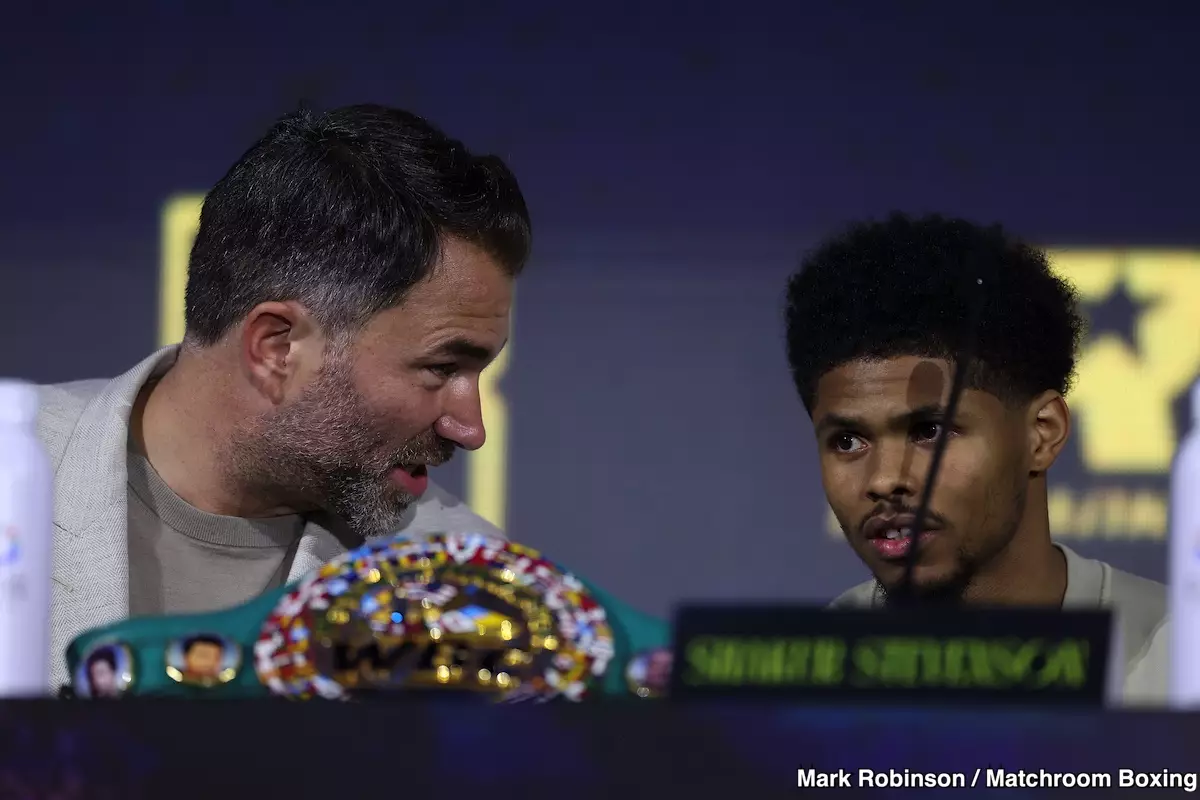The realm of professional boxing is notorious for lofty comparisons, especially between up-and-coming fighters and legends of the sport. Recently, promoter Eddie Hearn sparked a debate by likening Shakur Stevenson to the iconic Sugar Ray Leonard during a press conference for Stevenson’s upcoming fight against Josh Padley. While such comparisons can add excitement and intrigue to promotions, they can also overshadow the distinct qualities that define an athlete and the eras they represent. Let’s explore the implications of Hearn’s bold claims about Stevenson and assess the realities of his career trajectory.
Comparing any modern fighter to Sugar Ray Leonard is a formidable undertaking. Leonard, a five-time world champion, boasted a dazzling career that saw him conquer titans like Roberto Duran and Marvin Hagler. His remarkable skill set, charismatic presence, and ability to engage in legendary bouts set the standard for greatness in the sport. At 27, Leonard had already carved his name into boxing history with multiple high-profile fights, demonstrating not only his talent but also his ability to attract attention and revenue.
In contrast, Shakur Stevenson, with an undefeated record of 22-0 and 10 KOs, has yet to reach the same heights—or face the caliber of opponents—that defined Leonard’s early years. While Stevenson’s technical skills and defensive prowess cannot be understated, the disparity between his résumé and that of Leonard is obvious. One must ponder why Hearn would make such a commendable declaration about Stevenson when the evidence does not align with the historic significance that Leonard embodied.
As Stevenson gears up for his title defense against Josh Padley in Riyadh, the boxing world is left questioning his competition choices. Padley, who boasts a record of 15-0 with only four knockouts, does not present the same challenge as the legendary fighters who facilitated Leonard’s rise. If Stevenson is indeed the modern equivalent of Leonard, why has he not consistently sought out high-profile matches against top-tier opponents?
Interestingly, Stevenson’s current situation reflects a broader trend in boxing where fighters frequently find themselves tied up with promotional conflicts and weight class limitations. The recent withdrawal of Floyd Schofield due to illness forced Stevenson to face a replacement opponent, raising questions about his choices and the perception of his career progression. While unforeseen circumstances are part and parcel of the sport, they also signal a need for Stevenson to assert his role as a fighter willing to take calculated risks against formidable challengers.
Hearn’s assertion that Stevenson represents one of the greatest pound-for-pound fighters in the present era raises eyebrows primarily because it may contribute to a false sense of urgency in attributing greatness. The term “greatness” in boxing transcends mere technical ability or undefeated records. It encompasses the ability to captivate audiences, engage in thrilling bouts, and leave lasting legacies.
Unfortunately, by merely holding a few titles and fighting lesser-known opposition, Stevenson risks being seen merely as a champion versus a potential legend. True greatness requires definitive actions and memorable encounters that resonate with boxing fans. While Hearn’s enthusiasm is commendable, it creates an untenable expectation that may not align with Stevenson’s trajectory.
As Stevenson prepares to defend his WBC lightweight title, his focus should ideally shift towards taking on higher-stakes opponents that will define his legacy. He must seek out the kind of matches that elevate his status and push him closer to the realm of greatness sharpened by the likes of Leonard, Whitaker, and Mayweather.
Shakur Stevenson is undoubtedly an exceptional fighter with the potential for immense growth, but the process of achieving greatness requires making choices that align with the historical significance of the sport. Striving for challenges, embracing high-profile fights, and delivering unforgettable performances will create a narrative that just might allow Stevenson to one day stand alongside the legends of boxing—without needing to be compared to them.

